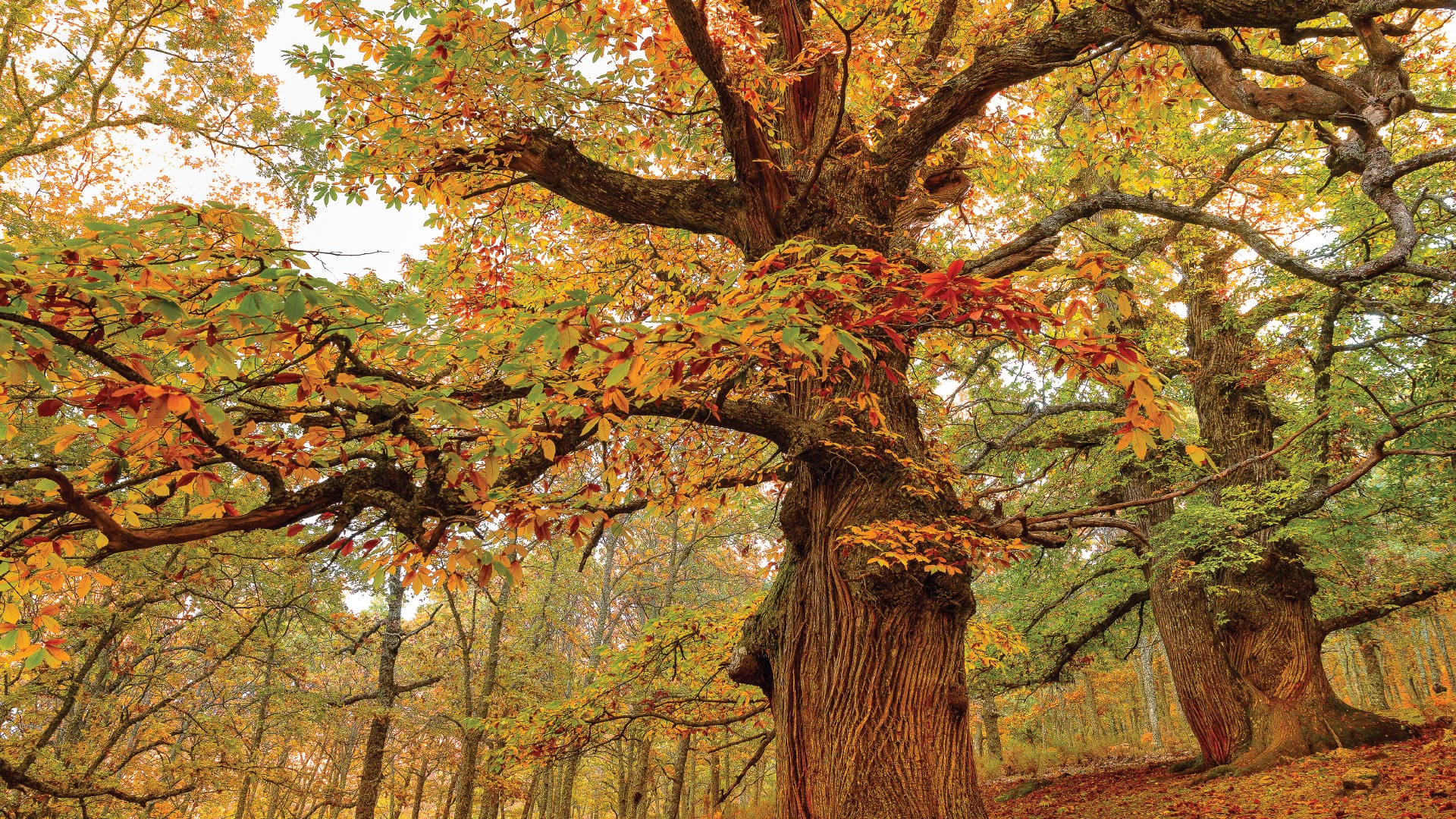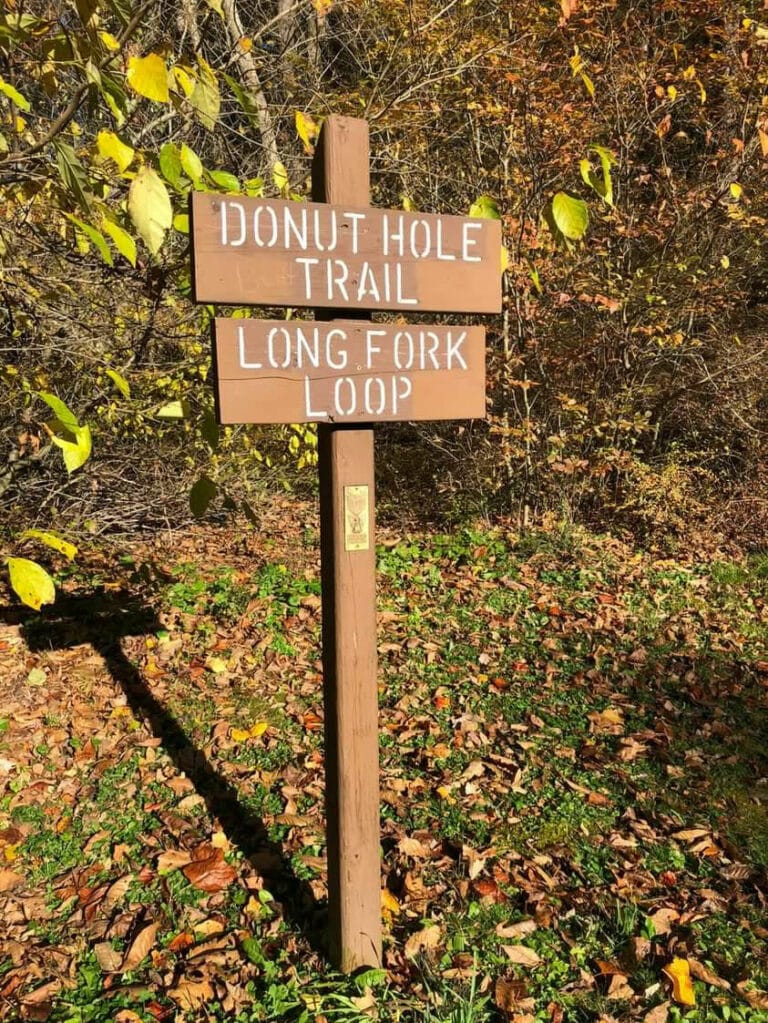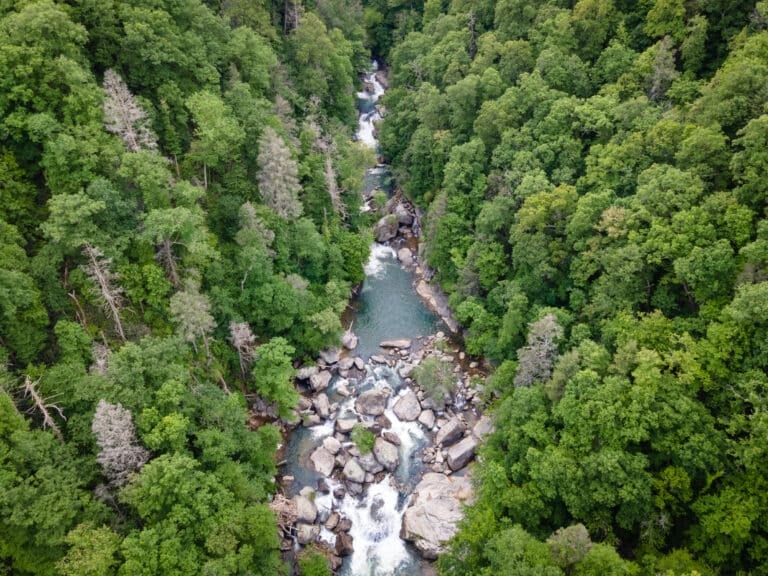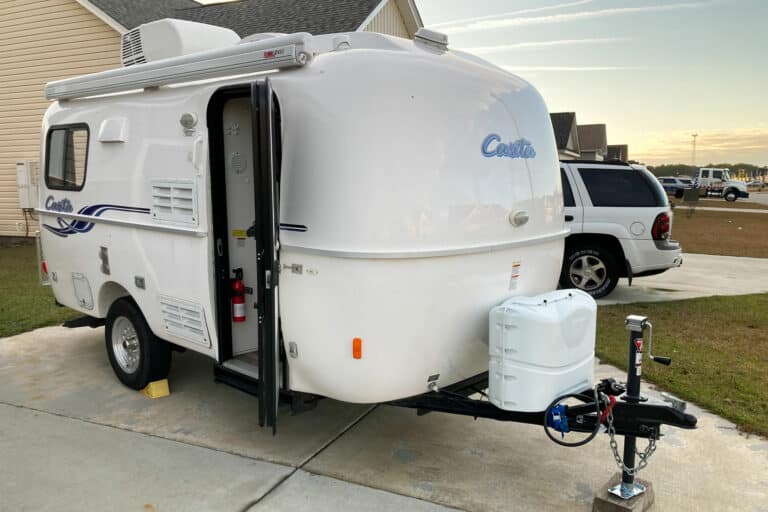The dibble bar is a strange little tool, a half-shovel, half-spade hybrid that could pass as a medieval torture implement. But in spite of its weirdness, the dibble is a wonderful tool for planting trees, capable of digging a hole in the soil and sealing a seedling into it in three easy moves: jab, pull, and push.
I’m planting trees with a woman I’ve never met from Kingsport, Tenn., on a former surface mine. “Feels weird, doesn’t it?” the woman says.
It does. For starters, the chestnut seedlings we’re planting aren’t really a part of our modern-day Appalachian forests. Ever since odd cankers first appeared on trees at the Bronx Zoo in 1904, American chestnuts have been decimated, the victim of a fungal blight from Asia. American Chestnuts can still be found in our woods, but they usually only grow a few feet before dying. Intentionally planting what should be a doomed hardwood seems at first glance like a waste of time and energy.
And then there’s the mine itself. To think of a coal mine is to conjure any number of descriptors—desolate, devastated, and poisoned, to quote several recent news articles—that speak to these lands’ environmental liabilities. Old coal mines are places for strip malls and industrial parks, not nature preserves. Why are we there planting trees?
Coal companies are supposed to restore mine sites to something resembling the terrain that existed prior to mining, but bankruptcy and legal loopholes often result in abandoned, denuded mine sites. The use of heavy equipment to stabilize former mines creates compacted soils where young forests have difficulty taking root. The removal of topsoil and use of non-native plants as ground cover just exacerbates that issue.

“There’s no mechanism left allowing most reclaimed mines to regrow a native hardwood forest,” says Chris Barton, professor of forest hydrology and watershed management at the University of Kentucky.
That’s where our volunteer planting group factors in. Our planting has been arranged by the Appalachian Regional Reforestation Initiative, a group established in 2004 to not only aid in reforestation efforts but to link the expertise of scientists like Barton and colleagues to industry and community partners. “Here’s an issue that is very polar,” Barton says of surface mining, “but you can get both sides to come together and work side-by-side.”
The Initiative has planted over two million trees on more than 3,000 acres since 2009. In addition, Barton says that industry groups are now using the same approach to jumpstart forest restoration on their own mines. The Initiative hopes to have 100,000 new acres reforested in the next ten years—a goal that includes planting over 60 million trees.
That work includes the ridgetop mine where we’ve gathered on that winter morning. Our volunteer group is just one step in the reforestation process, which involved removing invasive plants and prepping the soil well before we arrived. But this particular mine has an added wrinkle: among the trees we’re planting are those American Chestnuts, a new generation of trees selectively bred by the American Chestnut Foundation to be resistant to the fungus that all but killed off the species. If they’re successful, the trees will be among the first in a century to grow to maturity in the Appalachian woods.
It’s not an overstatement to say that using the region’s most looming environmental liability to resurrect a forest is packed with symbolism—something that comes up frequently as my planting partner and I figure out how to use the dibble bar. Her father used to talk about chestnuts, she says, but she’s never really seen them up close until now. Over the course of the morning, we develop a rhythm: open up a pit in the soil, cradle a chestnut into it, and then seal it beneath the surface of the mine. “This feels like I’m giving something back,” she says.
Much has been made in recent years of the divisions Appalachia exemplifies: a rift between rural and urban cultures, the battle for the survival of the coal industry, contrasting reds and blues on electoral maps. But those contrasts don’t change the fact that our mountains are home to 1.5 million acres of former mines like the one where we’ve gathered that Saturday morning—an area nearly three times the size of Great Smoky Mountains National Park. As Barton and colleagues are showing, rehabilitating that landscape might be the one uniting factor in a part of the country that’s often defined by its differences.
During the planting, for example, there are about as many industry supporters present as there are members of environmental groups. But nobody asks me where I’m from or how I vote. I never even get my planting partner’s full name, and there are no contentious arguments about environmental policy or the future of the Appalachian economy. Should there be? Absolutely; some of our best solutions can grow out of conflict. But our most important lessons about what it takes to move the mountains forward can be found in something as simple as spending a day on an old coal mine getting to know someone we’ve never met, learning how to plant a tree.








